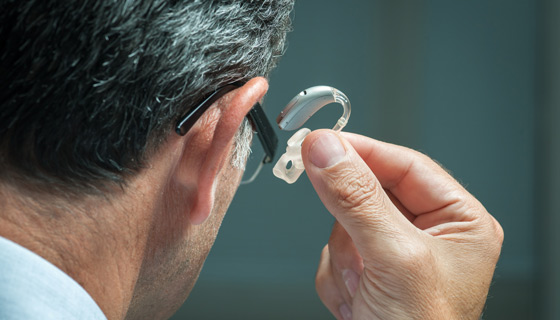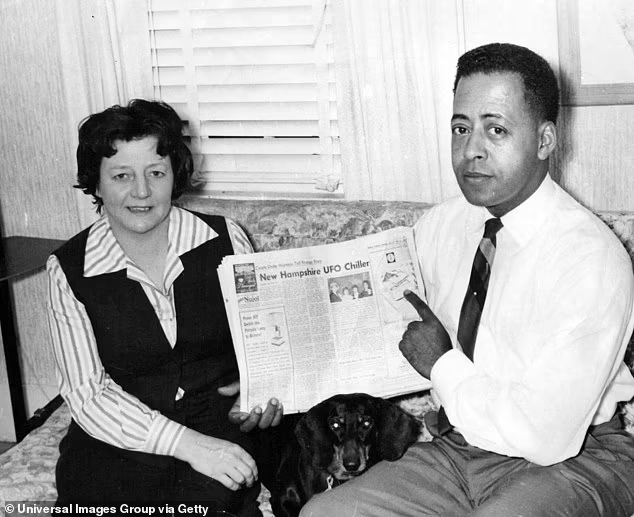The Hearing Aid Landscape: A Big Shift
For decades, the only way to get a hearing aid involved a visit to a doctor's office, often one with a basic sign advertising "HEARING AIDS." These clinics are still around, but thankfully, the landscape is evolving. In 2022, the FDA introduced a rule allowing consumers to purchase hearing aids over-the-counter (OTC) without a prescription, exam, or professional fitting. This move opened up a world of possibility for those experiencing hearing loss.
OTC Hearing Aids: A Game Changer
The arrival of OTC options has been a game changer for the hearing aid industry. Major audio companies are seizing the opportunity by acquiring hearing aid businesses and leveraging their established brands to reach a wider audience. Established hearing aid companies are also adapting, many by offering a more affordable OTC option alongside their traditional prescription products. It's important to note, however, that OTC hearing aids are for those with mild to moderate hearing loss. If your hearing loss is severe, consulting a doctor is still recommended for a proper diagnosis and to explore the full range of solutions available.
Choosing the Right Hearing Aid: We Have Answers
With a wider variety of hearing aids available than ever before, it's understandable to feel overwhelmed by the choices. This guide addresses your top questions about buying a hearing aid in today's market, helping you navigate the new landscape and find the perfect solution for your specific needs. We'll cover everything from understanding the different types of hearing aids and features available to navigating the buying process, with or without a doctor's involvement.
What Are the Different Styles of Hearing Aid?
While various hearing aid technologies exist, consumers mainly choose between two primary styles: behind-the-ear (BTE) and in-the-ear (ITE).
Behind-the-Ear (BTE) Hearing Aids
BTE hearing aids, reminiscent of older models, consist of a small plastic case worn comfortably behind the ear. This case houses the essential electronic components like the amplifier and microphone. A thin, transparent tube connects the case to a receiver, a tiny speaker nestled within the ear canal, responsible for delivering the amplified sound. While modern BTE aids are significantly smaller and less conspicuous than their predecessors, the design may still be noticeable to others. Additionally, manipulating them to achieve a secure and comfortable fit might require some dexterity, especially for users who wear glasses.
In-the-Ear (ITE) Hearing Aids
In stark contrast to the BTE style, ITE hearing aids are self-contained units that often bear a striking resemblance to Bluetooth earbuds. These sleek devices integrate all the necessary electronics into a single housing designed to fit snugly within the wearer's ear canal. While offering a more discreet option compared to BTE models, ITE aids aren't entirely invisible. However, the lack of an obvious external case makes them a more aesthetically pleasing choice for some users. It's important to consider social etiquette as well, as wearing earbuds in certain settings might not be appropriate. A significant advantage of ITE aids is their ease of use. Similar to earbuds, they can be conveniently popped in and out throughout the day, making them a suitable option for those who prefer to use their hearing aids intermittently.
Beyond the Basics
It's important to note that there are additional styles of hearing aids available, such as those that fit entirely within the ear canal. These types, however, are not yet widely offered as over-the-counter options and might require consultation with a hearing healthcare professional for proper fitting and programming.
How Much Do Hearing Aids Cost Now?
The price of hearing aids has changed dramatically since they became available over the counter.
In the past, hearing aids were incredibly expensive, often costing several thousand dollars (up to $10,000 in some cases). This high cost led some to call them the third-largest purchase a person might make, after a house and a car.
Thankfully, prices have dropped significantly since OTC regulations were introduced. While high-quality hearing aids are still an investment, they are much more affordable. Our top-rated models now range from $1,000 to $2,000 for a pair.
There are also even cheaper options available now. Manufacturers are competing to create more affordable hearing aids, similar to the "cheater reading glasses" you might find at a gas station. These ultra-cheap options can cost under $100.
It's important to remember that you generally get what you pay for with hearing aids. In my testing, I found a clear connection between price and performance (at least up to a certain point). Higher-end hearing aids offer important features like:
Frequency shaping
Improved noise cancellation
Hiss and feedback reduction
Mobile app support
More expensive options often include access to a professional audiologist who can make adjustments remotely to personalize your hearing experience. This support can be crucial for ensuring the hearing aid works well for you.
Are Prescription Hearing Aids Better Than Over-the-Counter Hearing Aids?
While prescription hearing aids might seem like the better choice initially, OTC (over-the-counter) hearing aids can be a good option depending on your needs.
Here's a breakdown of the key differences:
Hearing Loss Level: OTC hearing aids are best for mild to moderate hearing loss. If your hearing loss is more severe, a prescription hearing aid with professional fitting is recommended for optimal results.
Features and Customization: Prescription hearing aids offer more features and programmability to target specific hearing loss patterns. OTC hearing aids may have basic amplification and volume control.
Cost and Accessibility: OTC hearing aids are generally more affordable and readily available without a medical appointment. Prescription hearing aids typically require an audiologist visit and are more expensive.
Trying OTC Hearing Aids First Can Be Worthwhile
Although prescription hearing aids might seem superior, OTC models can be a good starting point for several reasons:
Affordability: They allow you to experiment with hearing amplification at a lower cost.
Trial and Return Policies: Many OTC brands offer generous return policies if you're not satisfied.
Convenience: You can easily purchase them without a medical appointment.
Consider Consulting a Hearing Professional
Regardless of whether you choose OTC or prescription hearing aids, it's always a good idea to consult with a hearing professional for proper evaluation and guidance. They can assess your hearing loss level, recommend the most suitable option, and provide after-care support.
Do I Need to See a Doctor Before I Get a Hearing Aid?
While you may not necessarily need to see a medical doctor, consulting a hearing professional is highly recommended before getting a hearing aid. Here's why:
Accurate Diagnosis: Hearing loss can vary. An audiologist, a trained hearing specialist, can map your hearing loss precisely using a painless hearing test. This test creates an audiogram, a chart that shows exactly which frequencies you have trouble hearing.
Personalized Treatment: Hearing aids aren't one-size-fits-all. They can be programmed to amplify the specific frequencies you struggle with most, based on your audiogram results. Without this information, it's difficult to ensure optimal benefit.
Better Results: While some online hearing tests exist, a professional audiogram is generally more thorough and reliable. This leads to a better chance of getting hearing aids that truly meet your needs.
In short, consulting an audiologist for a proper hearing test is the best way to ensure you get effective hearing aids and maximize your hearing improvement.
Do Hearing Aids Restore You to Perfect Hearing?
No, hearing aids cannot completely restore your hearing to perfect health. Most hearing loss is permanent, and even with a hearing aid, your unaided hearing won't return to its original state.
However, the benefits of hearing aids can be remarkable. People with mild hearing loss might even find that they hear better with them than they ever did before! It's important to have realistic expectations though, as no hearing aid is flawless.
The good news is that even a slight improvement in hearing can significantly impact your daily life.
How Many Hours a Day Should You Wear Hearing Aids?
While hearing aids offer a solution to hearing loss, adjusting to them can take time. They might feel awkward to insert and remove, require careful positioning, and cause some discomfort after wearing them for a while. You might also find the amplified sounds jarring at first.
The good news is, the more you wear your hearing aids, the more comfortable they become and the better your hearing will be. To help you adjust, most hearing professionals recommend starting slow and gradually increasing wear time. You could begin with just an hour or two a day, then extend that to three or four hours after a week. With practice, you should be able to wear them comfortably for most waking hours. It's important to remember though, everyone's needs are different, so full-time wear might not be necessary for everyone.
What Are the Benefits of Wearing Hearing Aids?
Hearing aids offer a range of advantages that go beyond simply improving your ability to hear. Here's a look at some key benefits:
Enhanced communication and social life: No more missed conversations, frustrating misunderstandings, or constantly asking people to repeat themselves. Hearing aids can significantly improve your ability to connect with loved ones and participate in social activities.
Reduced tinnitus: Hearing aids can help mask the ringing or buzzing sounds associated with tinnitus by amplifying external sounds.
Improved cognitive health: Studies suggest a link between hearing loss and dementia. Using hearing aids may help prevent or slow down cognitive decline.
Potential for better cardiovascular health: Research indicates a possible connection between hearing loss and heart problems. Improved hearing through aids might offer additional health benefits.
Overall, hearing aids can significantly enhance your quality of life by improving communication, reducing tinnitus, and potentially safeguarding your cognitive and cardiovascular health.
rephrase this with the heading
How Do You Clean Hearing Aids?
Almost every hearing aid I’ve tested comes with cleaning instructions and tools to help brush out debris like ear wax. Behind-the-ear models include receivers that are easily replaced when they become too clogged with wax to easily clean. You usually get extra receivers with your purchase and a tool that makes replacing them easy. I also like using cleaning gel or putty to get gunk out of hard-to-access nooks and crannies, especially in and around ear tips.
Original Medicare doesn't cover hearing aids or fitting exams. That might be surprising! You'll be responsible for the full cost if you have just Parts A and B.
However, some private Medicare Advantage plans (Part C) may offer hearing benefits. It pays to compare plans to see if this is an option for you.
Hearing aids come in two main battery types: rechargeable and replaceable.
Rechargeable hearing aids typically last between 16 and 24 hours on a single charge. Most charging cases can hold multiple charges, extending the total listening time to a week or more.
Replaceable batteries can last up to 70 hours, but they are becoming less common due to the convenience of rechargeable models. However, some people still prefer them because they can last longer than a single charge of a rechargeable hearing aid.












0 Comments